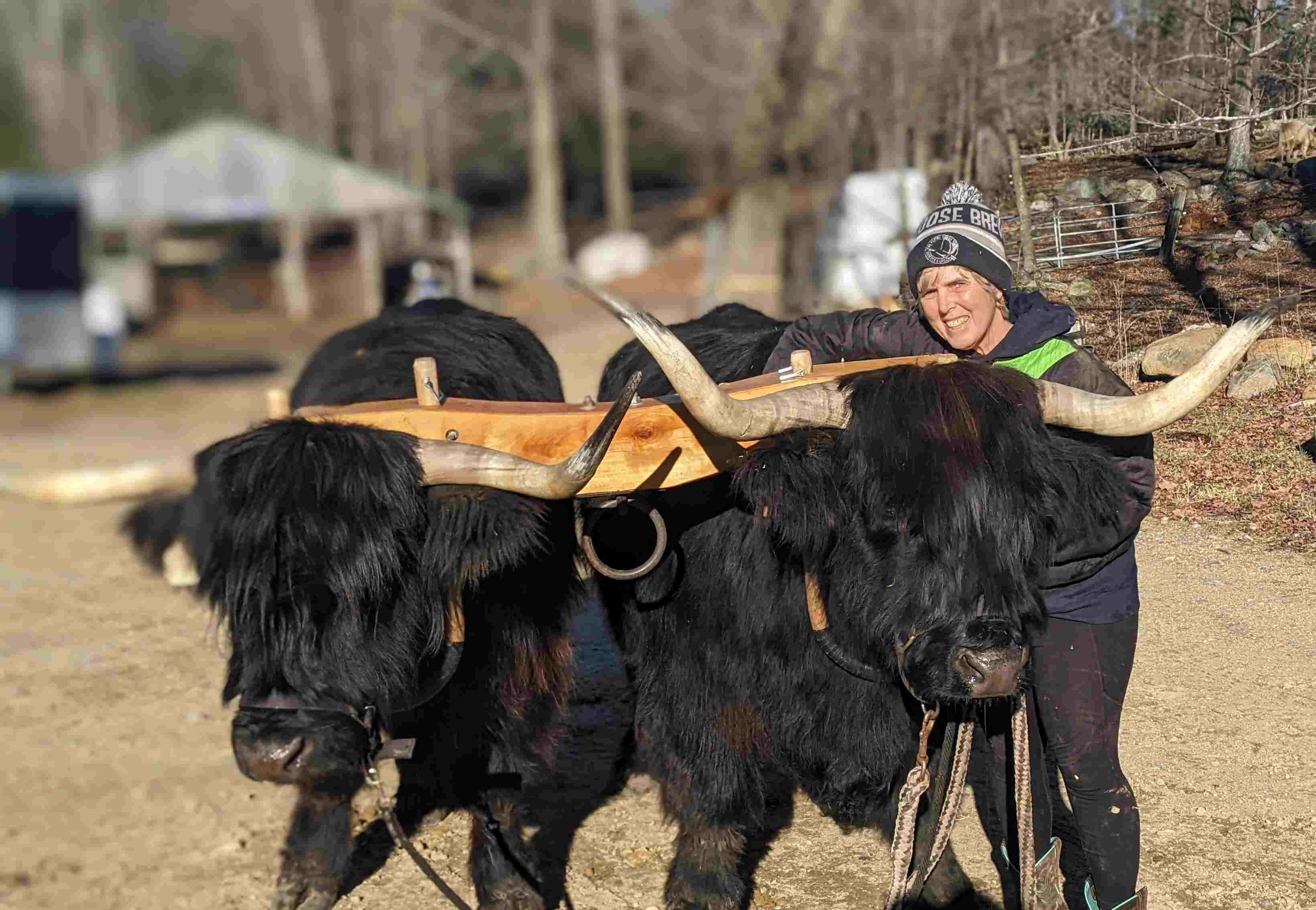Three Old Gals in Springtime Finery
posted on
May 14, 2023
This year my apple trees, planted in the 1920s by former resident Sarah Whitehouse, are exploding with blossoms and buzzing with bees.

This column is an excerpt from the author’s book, Yes, I Name Them, available in September 2023.
Someone has lived on my farm for about a century. She started life as a fragile sapling and grew into the big apple tree that stands in our backyard. Flanked by two other apple trees almost as old, she was planted in the 1920s by Sarah Whitehouse, a previous owner of Miles Smith Farm.
Sarah was a midwife, helping babies into the world in Loudon and Canterbury, making house calls in her cart, pulled by her stylish Morgan horse. The legend goes that one birthing went badly, and the baby and mother died. Upon arriving home, in a fit of frustration, Sarah threw down her driving whip, a twitch from an apple tree. It stuck in the ground, sprouted roots, and eventually produced apples. Pleased with the tree, Sarah planted one companion on each side to provide more apples for her famous pies.
I’m no botanist, and don’t know (or care) whether my trees are technically male or female. But given their ability to bear fruit, they’re female to me.
Health Care for Trees
When I moved into the farmhouse in 1972, these three gals were overtaken by forest and struggling to live. With the help of a chainsaw and youthful muscles, we released them from the confinement of the woods, but they were in bad shape. Twenty-five percent of the limbs on Sarah’s twitch tree were dead, and others had sucker sprouts growing so densely from branches that there was no room for apples.
The three seemed at death’s door, so we called in a tree surgeon who cut here and there, opening up the trees and shaping the crowns, giving them a form that any mature apple tree would be proud of.
I was told by a Yankee farmer that apple trees should be pruned so that you can “throw a cat through the middle.” While we never sent our cat flying through the tree, I assumed that meant most of the branches should be trimmed. Surgery worked, and some years, the gals produced hundreds of apples that dropped into the pasture they bordered, and my Scottish Highland cows feasted.
One year, Mike Polk, an arborist from Farmington, told me that the farmer who planted the apple trees had put them in the perfect spot—on a hill with good drainage, south facing and protected. “These are not only healthy trees; they are happy trees.”
Happy Cattle and Happy Trees
Wow, happy trees! I knew I had happy cattle but happy trees, too. My cup runneth over.
The trees are in bloom now, and I sit below, looking up into branches, watching bees flitting from blossom to blossom. Their hum makes the trees seem to purr like contented cats, stretching their paws in bliss as the pollination ritual progresses.
In the fall, my husband Bruce and I toss windfall fruit to the cattle. Sometimes we’ll try to throw an apple so that it’ll stick on the horns of Curious Bleu, my beloved Scottish Highland steer. He doesn’t mind this activity and welcomes the extra fruit.
I often imagine Sarah’s life before indoor plumbing, baseboard heaters, insulated windows, and paved roads. What would she think of her farm’s modern conveniences? I’m sure she would smile to see that her apple trees are still providing joy, nutrition, and beauty.



